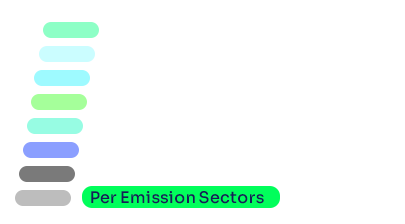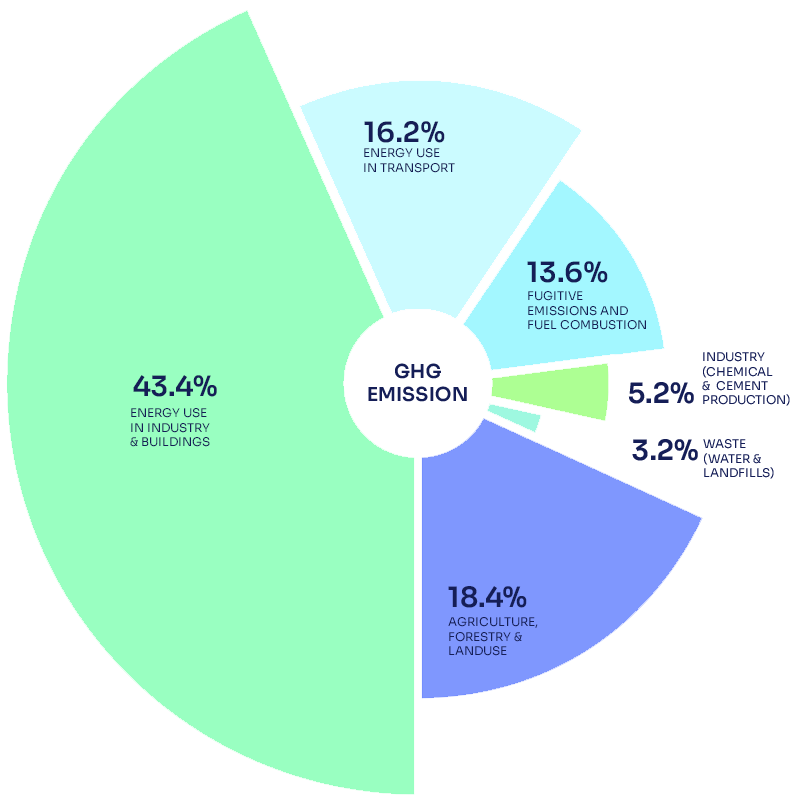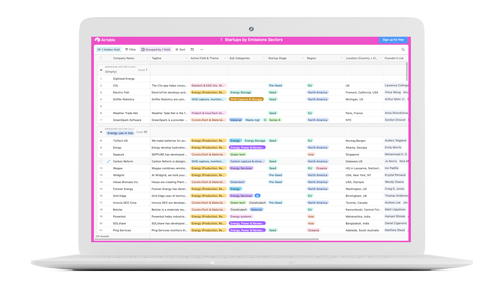
Global startup list
This global climate tech startups running list provides an overview of companies classified per GHG’s emissions sector. These teams are striving to develop solutions that will contribute to lowering sectors overall percentages. More companies are joining every week, these can be found in our weekly reviews.
Global greenhouse gas emissions by sector
These percentages are based off those released by Climate Watch and the World Resources Institute.
The startups featured are those working towards reducing the emissions and/or impact of these sectors.
Breakdown of emission classification
This insight was based off the most detailed, recent data SBC could identify from the WRI in 2016.
The classification and explanation of sectors was based off the IPCC’s Fifth Assessment Report as interpreted by Our World in Data in 2020.
Revisions, additions and expansions to this information by the climate tech community is encouraged!
43.4%
Energy use in industry & buildings
This sector combines energy use in industry, energy use in buildings and energy use in agriculture & fishing.
It looks at energy-related emissions from the production of:
Iron and steel, chemical & petrochemical, food and tobacco, non-ferrous metals, paper & pulp, and other industry (incl: mining & quarrying, construction, textiles, wood products, use of machinery in ag. & fishing).
It also includes energy usage in residential and commercial buildings.
16.2%
Energy use in transport
This includes indirect emissions and direct emissions from burning fossil fuels to power transport activities. This excludes emissions from manufacturing vehicles and transport equipment.
Transport activities include:
all forms of road transport (incl. emissions from burning fuel and diesel), aviation (incl. emissions from passenger travel and freight), shipping (incl. fuel burning), rail transport, and pipelines (incl. transport of commodities).
13.6%
Fugitive emissions & fuel combustion
This refers to the emissions that come as a result of leakage during extraction, transportation, damaged, or poorly maintained oil and gas pipelines.
It also refers to the leakage of methane during coal mining and flaring at oil and gas facilities.
5.2%
Industry
(chemical & cement production)
During certain industrial processes, CO2 is released as a by-product of chemical processes. This includes the production of cement, chemicals & petrochemicals. This sector does not include the emissions from the energy used in these processes as these are included in “Energy use in industry & buildings”
3.2%
Waste (water & landfills)
This sector refers to the emissions produced from wastewater (referring to the organic matter in these systems that decomposes) and the emissions from decomposition in landfills.
18.4%
Agriculture, forestry & landuse
This sector includes emissions from:
Degradation of grassland, cropland and forests (deforestation) as well as crop burning, rice cultivation, agricultural soils (during the application of synthetic nitrogen fertilizers) and emissions produced by livestock & manure.
Cross cutting enablers
This sector refers to services, tools and technology that enable better data, reporting, education and analysis of emissions or climate impact and risk.
This includes startups which enable interventions in multiple sectors, or those not specified such as circular economy, ethical consumption and those promoting better investing or more sustainable financial systems.
We have also included services and technology which monitors, accounts, and offsets carbon emissions.
GHG capture, use and storage
Startups featured here are creating technology that primarily captures emissions at their source, or removes them via land, ocean or tech based pathways.
It also refers to startups creating technology or processes to store these gases.
Add your startup to our growing database
If you are a founder creating climate technology in any of the above mentioned sectors and want to join our growing database, we encourage you to submit your team to our running series!
Alternatively, if you are currently featured in this list and are unhappy with the sector you are listed under, we would love to hear from you. This data is the work of a small, self-funded team and we look forward to clarifying, growing and refining this resource with the help of our community.

